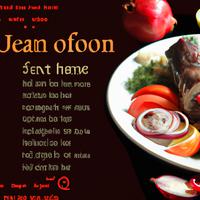
1 serving (100 grams) contains 200 calories, 25.0 grams of protein, 10.0 grams of fat, and 0.0 grams of carbohydrates.

Log this food in SnapCalorie

Nutrition Information
Calories |
476.2 | ||
|---|---|---|---|
% Daily Value* |
|||
| Total Fat | 23.8 g | 30% | |
| Saturated Fat | 10.7 g | 53% | |
| Polyunsaturated Fat | 0 g | ||
| Cholesterol | 190.5 mg | 63% | |
| Sodium | 166.7 mg | 7% | |
| Total Carbohydrates | 0 g | 0% | |
| Dietary Fiber | 0 g | 0% | |
| Sugars | 0 g | ||
| protein | 59.5 g | 119% | |
| Vitamin D | 0 mcg | 0% | |
| Calcium | 35.7 mg | 2% | |
| Iron | 5 mg | 27% | |
| Potassium | 785.7 mg | 16% | |
* Percent Daily Values are based on a 2,000 calorie diet. Your daily values may be higher or lower depending on your calorie needs.
Food Attributes
Source of Calories
About Lamb fillet
Lamb fillet is a tender, lean cut of meat known for its rich, mild flavor and versatility in cooking. A staple in Mediterranean, Middle Eastern, and European cuisines, it’s often featured in dishes such as grilled kebabs, roasted mains, or stir-fries. Naturally high in protein, lamb fillet is an excellent source of essential nutrients, including iron, zinc, and B vitamins like B12. These nutrients support muscle health, energy production, and immune function. Lamb is also rich in healthy fats, particularly omega-3 fatty acids, which contribute to heart and brain health. However, it can be higher in saturated fat compared to other protein sources, so moderation is key. When paired with vegetables and whole grains, lamb fillet can be part of a balanced diet. Opting for lean cuts and mindful preparation methods like grilling or baking enhances its nutritional benefits.



